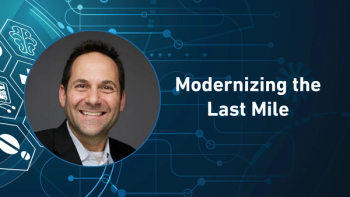
- Pharmaceutical Commerce - May/June 2015
US spending on drugs hit $373.9 billion in 2014, up 13.1%
Effect of the first full year of Obamacare was muted, although a record number of prescriptions were written
Double-digit growth—not seen since the early 2000s in the US pharma industry—came roaring back in 2014, according to the annual report from the IMS Institute for Healthcare Informatics (Parsippany, NJ). Spending on drugs (based on ex-manufacturer pricing, and not including tens of billions of dollars of discounting) reached $373.9 billion. A combination of factors generated this growth: a decline in patent expiries (which removed $11.9 billion from industry sales as lower-cost generics replaced them); growth in new product launches (adding $20.3 billion—much of which was for hepatitis C therapies); and the continued swelling of specialty pharmaceutical sales (up 26.5%), which now constitute a third of all industry sales. Paradoxically, although it was the first full year of Obamacare, with 15.7 million lives now being insured by Medicaid and state and federal heath exchanges, the effect on pharma sales was slight—some $1 billion in added sales, mostly of generics.
Other highlights:
- Price inflation of branded products—less the off-invoice discounts—added another 3.1% to the sales volume
- Copay coupons are now being used in 8% of all branded-drug sales, up from 6% in 2013, and are becoming a conventional part of new brand introductions to offset poor formulary placement
- Specialty products constitute 42% of the late-stage (Phase II-III) clinical pipeline; various studies predict that specialty products will be 50% of drug sales by around 2020.
The IMS Institute report also details trends in drug sales by channel: for once, sales growth at independent pharmacies outpaced chain drug stores (14.2% vs. 7.6%), although chains are still the dominant channel by far, representing 33% of all sales. But the biggest jump was in mail service, which grew 26.6% (to $79.9 billion), which Murray Aitken, executive director of the Institute, attributes to more specialty products being delivered via that route. The count of prescriptions set a new record—4.33 billion, with chain stores grabbing the highest portion of that growth (up 4.0%), while independents were up 1.4% and mail service up 0.9%.
The full report, Medicines Use and Spending Shifts: A Review of the Use of Medicines in the U.S. in 2014, is available at the IMS Institute
Articles in this issue
over 10 years ago
Understanding the companion-diagnostics environmentover 10 years ago
HPCLC Spring Meeting recapover 10 years ago
Pharmaceutical Commerce at 10over 10 years ago
A Conversation with Shabbir Dahod, TraceLinkover 10 years ago
A Big Data approach to patient engagement and adherenceover 10 years ago
What makes specialty pharmacies 'special'?over 10 years ago
2015 Product Security Reportover 10 years ago
Compliance packaging vendors keep innovatingover 10 years ago
Cryoport expands the user base of its cryogenic shipping servicesNewsletter
Stay ahead in the life sciences industry with Pharmaceutical Commerce, the latest news, trends, and strategies in drug distribution, commercialization, and market access.




